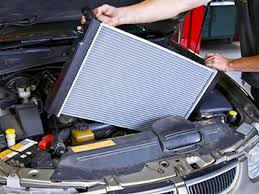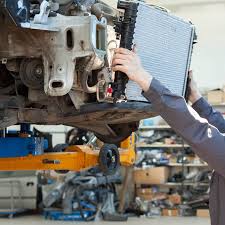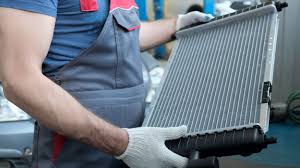Is Your Car Giving You the Silent Treatment? How to Tell When You Have a Radiator Problem
One fine morning, you’re on the highway, the sunroof open, just singing away to your favorite tunes. Then suddenly, out of nowhere, the temperature of your car zooms upwards towards the red zone. Uh-oh. In fairly quick order, steam is spewing out from beneath the hood like some kind of errant geyser on a mission. This is not one of those “ignore it and it’ll go away” things. Time to stop and start looking for an auto radiator repair service near me, but how did we get here? Now, let us try unraveling this mystery of your car’s cooling system and go to those nagging warning signs so you are not in hot water.

Temperature gauge dance: it sits quite happily in the middle. If it is always teetering toward the hot section, then your radiator may be on the fritz. It is not there just for decoration; it’s your early warning system-in other words, your car’s SOS to you. And ignoring it? That’s a bit like putting earmuffs on when the fire alarm starts screaming. Next up: mystery puddles under your car. Ever play detective about such things, trying to figure out just where the splashes came from? If it’s some kind of strange, sweet-smelling liquid, your radiator may be leaking coolant. Thankfully, cars don’t have the same habits as dogs. They should not leave your driveway surprised.
Watch out for those stealthy coolant leaks that build up their reach insidiously over time. Catch them before the radiator’s drier than the Sahara.
Has your heater and AC just become as moody as a caffeinated kangaroo? Erratic heating or cooling can point toward an ailing radiator. A radiator usually works out to be the unsung hero of balance in the hot-and-cold game of your vehicle. If the cabin of your car has taken up a roller coaster ride with temperature, well, it is time to cast suspicion at the radiator.
Then, of course, there is rust-your car’s version of a terrible acne phase. Pop up into the hood and look out for rust or discoloration around and near the radiator, mainly because more often than not, this is a dead giveaway that your radiator is getting old and crusty. Rust may be cosmetic, but it chomps through the efficiency of your radiator, bit by bit, just like how a termite would to a wooden cabin. That’s definitely one thing you don’t want to leave be. Ever been serenaded by odd hissing noises? The cars aren’t supposed to sound like a symphony of snakes. Generally, when there is a hissing noise, it spells trouble in the system. It could be steam escaping from the radiator. It is one of those things where one had better look before regret gets a chance to set its stage. Skim through sluggish car performances and a drop in fuel efficiency.

A bad radiator may not cool the engine properly, causing the car to overheat and not function to its full potential. It’s like trying to sprint with a fever you re not getting far and certainly not fast.
Why local auto radiator repair shops might just be the best-kept secret.
Want your car engine never to overheat at the most inappropriate moments? Well, then you definitely need an auto radiator repair service near me-the very first way onto your local highway into Reliability City. Why local? Well, here is the lowdown on why these local spots are. Consider this: it is a fine weekend morning and you want to take a soft drive around. Halfway down the road, your engine temperature needle takes a jump toward the hot side. What to do now? You might drive for miles to some large-service center, waiting for several hours before anybody can pay any attention to you, or you will go to your neighborhood radiator repair gurus. They know your car and also maybe know you too. And that is where local services differ, adding a bit of personality. There is Jane, the friendly receptionist, who remembers your name over the sea of clients; there is Bob, the technician, with hands full of grease, full of knowledge, living for cars-just there and ready to dive into the inspection of your car’s hiccup.
Large services can have cool gadgets, but they often can lack in personal touch. Then, of course, there is experience. Big signs, flashing advertisements-mom-and-pop shops do not have all those, but the years of getting their hands dirty are behind them. They’ve soaked in from hands-on experience all the ins and outs.
You got a guy down the road that’s been doin’ that for thirty years, long before you ever started driving, had replaced parts of cars. Well, that will tell you a lot, my friend.
Let’s chew the cud on cost now. Big centers feature towering bills and surprise fees that just appear to whale-dump on you from out of nowhere. Mostly, local places do not take you on that big of a financial ride; they just lay it out simple and straightforward, give you legitimate advice, and try to save you one or two bucks-after all, they rely on you coming back. They do not exist to make a fast buck but rather to develop trust and relationships over an extended period.

Another good advantage is the flexibility involved: locals can, at times, squeeze you in between other jobs, trying to fit in that urgent fix. A corporate place? They are usually tied up by tight slots and full books. If you’re driving some rattletrap and need a quick turnaround, local gives you a better chance of that. There is community support-your money keeps locally, fuelling growth in neighborhood businesses. That is a win-win-you get a fixed car, and the local economy gets a boost, or if you will, an investment, a vote of confidence in your own backyard. All that may be, but there is something more to giving a set of keys to a person and not some faceless company-a person who considers your car not just another job but one of his or her own. That makes all the difference when anyone works on your vehicle, just like it is his or her own prized possession. You don’t want it treated like some kind of fun fair ride.

